

culebra22
-
Content count
125 -
Joined
-
Last visited
-
Days Won
2
Posts posted by culebra22
-
-
thankyou culebra ill try it out im having trouble with spider mites on me brugs
im keen on companion planting at the mo nice post blowng ;)
Yeah the hot dry weather causes the spider mites to have a population explosion.
I find the coriander infusion, applied regularly (and if possible after every rainfall) to be as said a reasonable repellent,
then again I'm not sure if actually kills them and it's not really a solution as they are determined little bastards and breed like crazy and come back quick fast.
think of it as making the difference between having moderately damaged leaves and no leaves at all lol. thing is it has to be reapplied so regularly.
Best way I've found to actually kill them is a thorough application of Natrasoap, but it's expensive.
I would think that companion planting would be a great idea.
sanguinea is just the worst, stupid thing. I practically give up on mine in the ground over the hotter months..
aside from them absolutely hating the hot and dry, the mites cause almost complete seasonal defoliation.
I have these stethorus beetles, looking like a miniature ladybird, or at least some creature that looks like them which self colonised my brugs and do eat spider mites (however whilst they do prey on them they understandably have a hard time keeping up with the mite population and there never seems to be enough beetles around...).
(^stolen from the net.. wish I could take a macro like that).
In an ideal world where there is actually something called water available I reckon one could install an awesome nightly misting system which would probably be very effective.
-
a strong coriander infusion in a sprayer is a good way to repel spider mites.
-
 1
1
-
-
How long do they take to root usually?
usually about 2 weeks or less to root in warm weather.
conveniently this period coincides perfectly with the time the scion usually requires to take and begin growth.
Sometimes the scion can look good (i.e. appear to be well attached) but not actually start to grow for several weeks after this though...
a quick google comes up with a link showing the phenomenon i describe:
http://www.panarottocactus.net/phpBB2/viewtopic.php?t=923&sid=3fe81d01bc2cf01d91640f264e7a8065
-
F. boliviana, it also turns out it is considered a weed here
WhaThat plant!?... I mean yeah well isn't everything!
Seems that slowly but surely all exotic plants are being put on weed lists...
-
That they would "control" a number of Cactaceae that are not known to contain any restricted chemicals or have any known psychoactive effects it completely retarded and every grower of these plants should be concerned.
It almost seems as if their govt did an internet search for psychoactive cacti and it came up with Teotz' Lost Peyotes list...
-
, imo callousing is unnessecaryabsolutely!
it never rots ime if warm.
cut ---> straight into wet soil.
or cut---> into a jar of water immediately, just like a brug cutting.
no callous whatsoever.
you can graft to unrooted pereskiopsis stocks, i never use rooted ones at all.
in fact i think it's advantageous...
rationale being that peresk root fast as and the initial absence of roots it actually beneficial imo as it alleviates the common problem of water turgid pressure dislodging the scion whilst it is in the process of taking and preventing a quality union from forming. by the time a sound quality union between the stock and scion has formed then conveniently the stock will have a well developed root system and the growth explosion will begin.
that or use a rooted stock and allow the soil to dry out before the graft is attempted.
note i mean dry soil only ... for a pere graft to be successful high humidity is essential.
-
depends where you are in Aus.. some states like WA are stricter than most...
-
Now That's wot I'm Talkin 'Bout!
Am thinking this is the species of Fuchsia which the similar Iochroma is named after, "-oides" just being Latin speak for 'resemblance to-'.
even the leaves are very similar...
Fuchsia berries are edible... most are very bland though.
However F.boliviana is supposed to have a sweet flavour when ripe.
I have seen this one around from time to time, it is uncommon.
I saw an alba (white flowering) form of boliviana at the Mebourne botanical gardens.
-
-
perhaps Fuchsia dependens or boliviana?
-
First glance I thought this was an Iochroma fuchsioides, and a good find.
closer inspection suggests that it is a probably a Fuchsia (or a relative thereof), and if so not in the Solanaceae.
The berries are pretty diagnostic.
-
Here Io's in the ground often defoliate in late summer as a result of extreme heat, prolonged dry, burning sun and spider mites.
In Autumn when the rains come they recover nicely and flower abundantly.
In winter some defoliate again, this time in response to the cold. they come back to life in spring.
We had some rain recently so the plants in flower I posted pics of look healthy.
Cool, will try a few leaves for motion sickness (incidently I suffer from this fairly severely after long drives
).
Some Iochroma sp. have been found to also contain withanolides like those of Ashwagandha- Withania somnifera.
-
a good link:
http://www.herbs2000.com/herbs/herbs_cinchona.htm
Table: Alkaloid Content Comparison by Cinchona species
Species Total Alkaloids (%) Quinine Content (%)
C. calisaya 3 - 7 0 - 4
C. pubescens 4.5 - 8.5 1 - 3
C. officinalis 5 - 8 2 - 7.5
C. ledgeriana 5 -14 3 - 13
C. succirubra 6 - 16 4 - 14
from
an epic link:
http://www.rain-tree.com/quinine.htm
FM we need succirubra!!!
seems C.pubescens is pretty average in terms of alkaloids, although this is just a very general guide (notice the huge ranges) and I imagine quinine content would accordingly be extremely variable... indeed I found out that concentration varies not only from species to species but also from clone to clone of the same species and also from the varying altitudes and climates in which the same clone is grown in...
I think i read C.succirubra is actually a super potent selection cultivar of pubescens
-
haha yeah I've noticed that too.
accordingly that pot has been grown in a shady location. (moved for photo)
Abundant food and water also contribute to the large leaves.
I quite like this "huge leaf effect".
Ios seem rather prone to spider mite attack too...
hey has anyone assayed any of these? i think i read they contain tropanes like scopolamine.
-
Seed-grown Iochroma cyaneum, about 5 or so months old from germination.
I like the brugmansioid leaves.
Iochroma spp. are easy to grow from cuttings also.
hopefully the "fuchsioides" I found proves to be as easy as cyaneum from seed, because I collected several ripe seed pods from it.
I. fuchsioides is used by curanderos- shamans in Colombia, and if I remember reading correctly many early depictions supposedly of Brugmansia sanguinea are actually of this species. It would seem to be the only Iochroma species with any real documented historial usage, although I would imagine other species would have a similar chemical makeup.
R. Schultes observed (discovered?) this plant in the Colombian town of San Pedro and recorded that the Kamsa Indians referred to this plant as borrachera/-andake - "intoxicant" and that it was used for cases of difficult diagnosis with the 'unpleasant side effects lasting several days'. It was added to ayahuasca.
other names are:arbol de campanilla, campanitas, guatillo, nacedero, paguando, tutujansushe and more.
Also as flor de quinde- hummingbird's flower, accordingly these birds are their pollinators.
I observed the Australian equivalent; honeyeaters feasting on them when these flower photos were taken.
-
-
-
The Cactus of the 4 Winds.
a very shamanic name that.
-
-
that kinda looks like a mad spiral stair case.
And she's buying a stairway to heaven.
-
The Incas used "quinquina"- "bark of barks" to treat shivering associated with high altitudes and low temperatures inherent in their Andean homeland.
Following conquest and its discovery as an affective malaria treatment "Peruvian bark" became one of the most highly valued and sort after commodities, worth it's weight in gold.
The name Cinchona comes from a Spanish countess of Cinchon, apparently the first European to be cured of malaria.
Demand was extremely high in the 17th century and beyond, malaria being prevalent in Europe at the time and the wild tree populations were decimated so plantations were established.
The Spanish (and later the independent Latin American states) wanted to maintain their effective monopoly of the industry, so strict restrictions on the movement of plant material were enacted in Peru, Bolivia etc. Despite these measures the Dutch managed to smuggle some seeds to Java and by 1930 were producing 97% of the worlds quinine supply.
The British also established sizable industries in India and Sri Lanka.
Quinine was the catalyst allowing for successful European colonisation of the tropics, especially in Africa.
It is apparently extremely toxic in overdose, and can result in death.
Interestingly the malarial plasmodium has not developed resistance to natural quinine, although it has to many synthetics and other malarial treatments.
-
FM, that's awesome Velvet.
how old do you reckon she is?
What a flower fest. TFS
WTF is wrong with people?
"Oh no, it's dropping flowers on my property, it's just too much to bare- Kill it!!".
-
-
so can anyone tell me if this indicates that it also includes other lophs? for example caespitosa,fricci.koehresii,diffusa etc.Sorry i have absolutely no idea about the relevant laws in your country,
Just thought I would contribute my 2 cents in and say that caespitosa is a form of L.williamsii so logically would come under it and therefore also be illegal, although laws are often not logical so don't take my word for it.
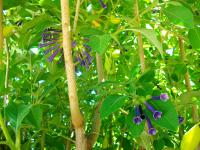
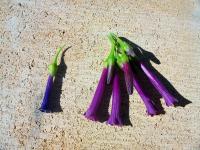
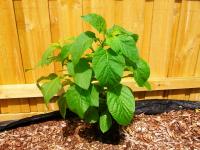
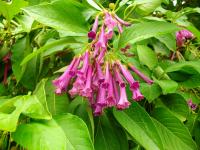
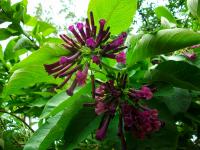
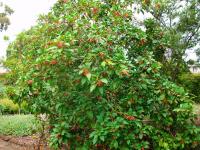

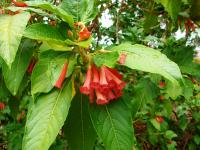
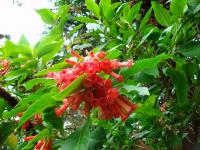
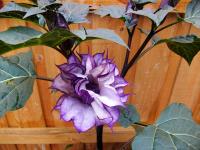
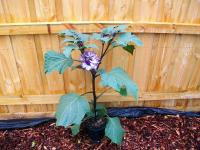
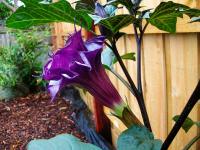
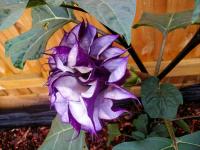
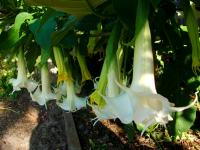
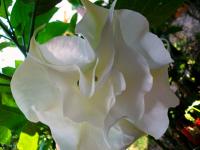
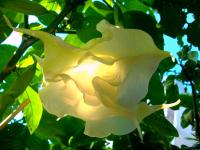
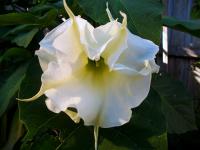
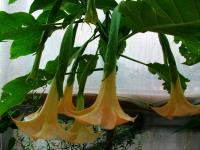
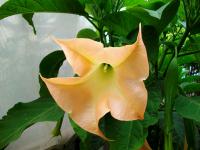
700th post giveaway
in Seed & Plant Swaps
Posted · Edited by culebra22
Yay I can enter.